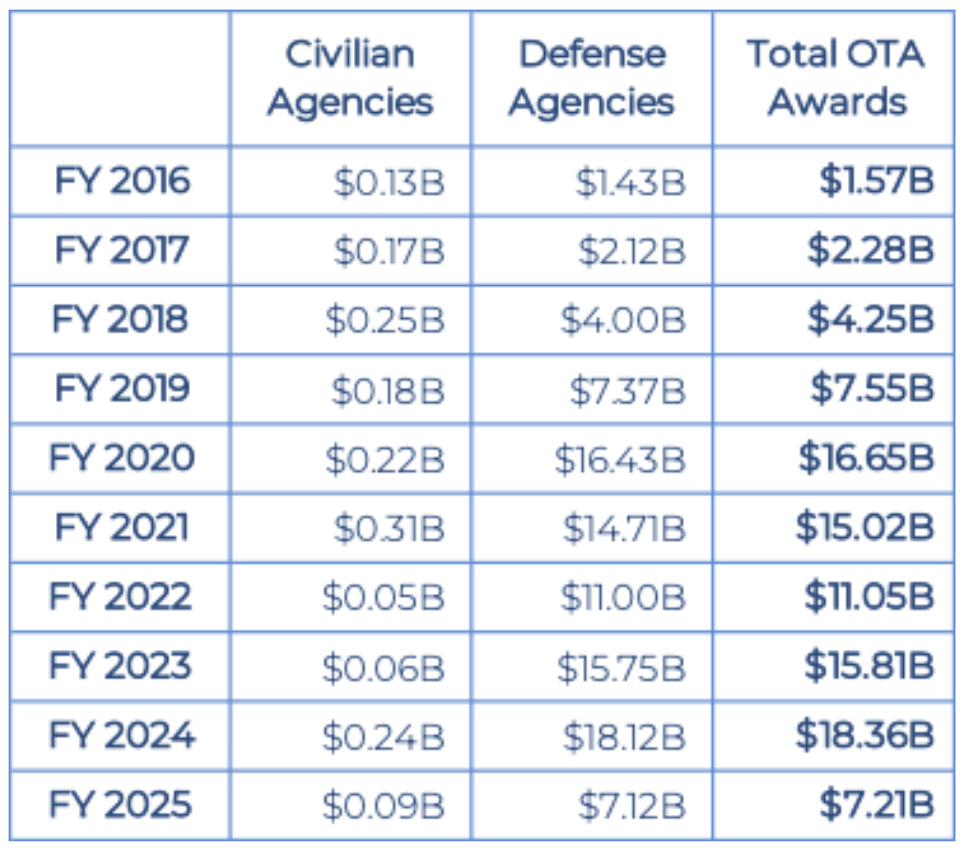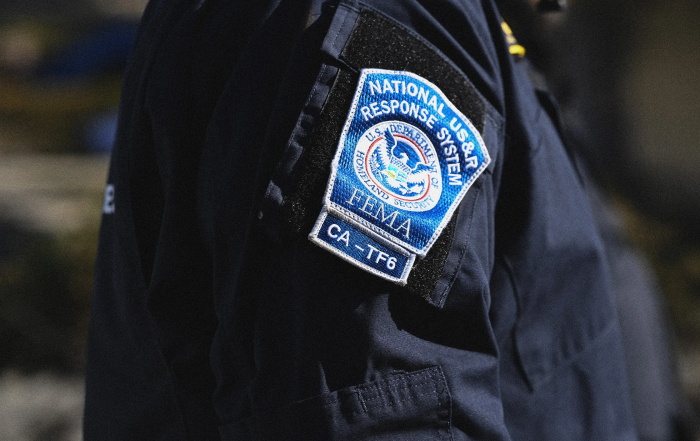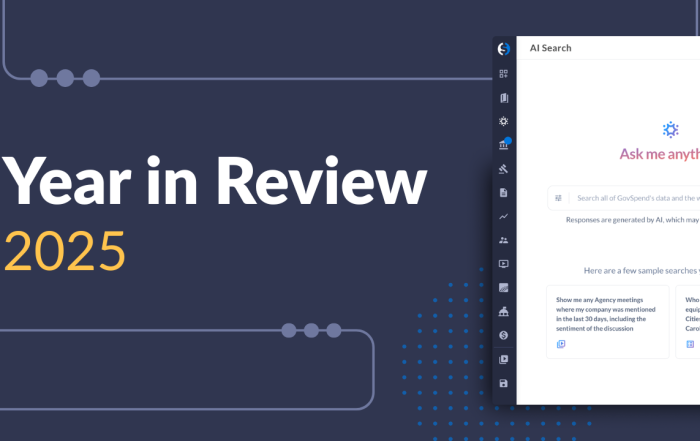
In GovSpend’s latest webinar, ICYMI: OTAs – What’s the Big Deal?, procurement experts Archisha Mehan (Founder, FedConsult) and Dr. Dolores Kuchina-Musina (Founder, Rexota Solutions) unpacked the growing importance of Other Transaction Authorities (OTAs)—and what buyers, sellers, and contract managers need to understand today.
Here’s a breakdown of what they covered and why OTAs should be on your radar.
OTA Use Is Growing—Significantly
Based on data from the Fedmine platform, GovSpend’s federal solution, federal OTA obligations have grown from $1.6 billion in FY16 to over $18 billion in FY24. As of mid-year FY25, OTA activity had already surpassed $7 billion, with signs it will exceed last year’s total.
While OTAs were once used mainly by civilian agencies (particularly the Department of Homeland Security), the Department of Defense (DoD) now accounts for over 90% of OTA spending. And the trend is moving steadily in that direction.

What Is an OTA, and Why Do Agencies Use Them?
OTAs are not new—they’ve been around since the 1950s, originally authorized for NASA under the Space Act. They are legal acquisition instruments that sit outside the Federal Acquisition Regulation (FAR) and give agencies more flexibility in how they structure agreements.
They are typically used for research, development, and prototype projects, especially when:
-
Traditional procurement methods are not a good fit
-
The agency wants to work with a nontraditional vendor
-
The project involves innovation, testing, or joint development
But OTAs are not “off the books” or free from structure. As Dr. Kuchina-Musina emphasized, they do not eliminate compliance. Laws governing intellectual property, export controls, and contract formation still apply. The government must still justify why an OTA is appropriate.
Don’t Assume All OTA Rules Are the Same
One of the most important points discussed: OTA authority is not uniform across agencies. DoD, NIH, NASA, ARPA-H, and other agencies have different statutory language, reporting requirements, and internal policies. Some are more narrowly defined than others. For example:
-
NASA’s OTA authority is broad and hasn’t changed much since the 1950s.
-
DoD’s statute includes detailed language around cost share, prototype definitions, and use of consortia.
-
NIH’s OTA use is tied to specific programs and includes multiple authorizing statutes.
Assuming DoD’s approach applies across the board is a common mistake that can lead to misaligned strategies.
How to Find OTA Opportunities
OTA opportunities don’t always follow the traditional posting model. While some solicitations are now posted on SAM.gov, others use methods such as:
-
Broad Agency Announcements (BAAs)
-
Commercial Solutions Openings (CSOs)
-
Hackathons and pitch days
-
Industry days
-
OTA consortia (e.g. ATI, SOSSEC, CMG)
-
Partnership intermediaries (e.g. Catalyst Campus, Wright Brothers Institute)
If you’re only searching SAM.gov, you’re likely missing a large portion of active OTA activity.
Yes, Consortia Work—and They’re Not a Loophole
The consortia model is widely used in DoD and beyond. While they’re structured differently from traditional procurements, they are formal mechanisms for competitive awards under OTA statutes. Consortium management groups typically maintain their own opportunity portals. Some waive membership fees to lower the barrier to entry for vendors.
And it’s not just DoD. Agencies like BARDA, ARPA-H, and state-level programs also use consortia to engage with vendors.
OTAs Allow for Negotiation—That’s the Point
One major advantage of OTAs is that nearly every term is negotiable, including:
-
Intellectual property ownership and rights
-
Payment terms (fixed price, milestone-based, or cost-expenditure models)
-
Termination clauses
-
Audit and accounting system requirements
For example, the government may agree to fund early equipment purchases upfront to help small vendors get started—something not typically done under FAR-based contracts.
Importantly, a termination for convenience under an OTA doesn’t carry the same negative consequences as it might under a FAR contract. It’s more like ending a commercial agreement.
Policy Backing Is Strong—and Expanding
Several recent policies and legislative efforts support wider use of OTAs:
-
Executive orders encourage the use of OTAs to attract commercial vendors.
-
Congressional reports and memos (especially via the NDAA) continue to highlight OTAs as a preferred method for certain types of procurement.
-
Proposed legislation like the FORGED Act and Innovate Act could expand OTA authority or streamline how it’s used.
That said, not all agencies have the internal staffing or agreement officer training needed to fully leverage OTA tools. That’s beginning to change—but there’s still a gap.
Final Takeaways
For contractors: If you’re working on a capture plan for FY26, OTAs should be part of the conversation. They offer a path into federal contracting without the full weight of FAR-based compliance.
For agencies: As budgets tighten and acquisition timelines come under pressure, OTAs offer another route to meeting mission needs, particularly when the traditional procurement model isn’t well suited to the work.
And for everyone: Understanding the statutory differences, staying up to date on reporting requirements, and using platforms like GovSpend and Fedmine for buying signals and competitive data can make the difference between a missed opportunity and a successful award.
Looking for more?
-
Access the full recording and presentation slides here.
-
Read Archisha Mehan’s blog post for a deep dive into OTA data and trends.
-
Connect with Dr. Dolores Kuchina-Musina on LinkedIn to ask follow-up questions or request her list of active consortia.



